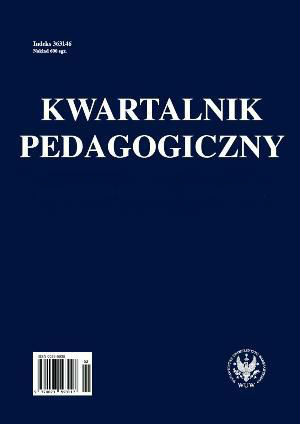EUROPÄISCHE DIMENSION UND EUROPÄISCHE IDENTITÄT ZWISCHEN TRADITION UND PERSPEKTIVE. ANMERKUNGEN ZUM BILDUNGSWESEN IM ‚GRÖßEREN EUROPA’
THE EUROPEAN DIMENSION AND IDENTITY BETWEEN TRADITION AND PERSPECTIVE. REMARKS ON EDUCATION IN “EXTENDED EUROPE”
Author(s): Wolfgang MitterSubject(s): Education
Published by: Wydawnictwa Uniwersytetu Warszawskiego
Keywords: tożsamość europejska; Unia Europejska; szkolnictwo w Europie
Summary/Abstract: The article consists of five parts entitled: Extension of the European Union, European Dimension in Education and Upbringing, European Identity, Middle Europe in the “Double Transformation” Process, Quo vadit media of Europe. The first part is a reflection on the Union extension by one third, which must have affected its political, social and economical structure. It has been widely discussed, both before and after the extension, to what extent introduction of “post-communist” countries into the Union has resulted in the expected process of European integration. The process was supposed to be an effect of “double transformation”. However, the process did not include education, which has remained different in various European countries. Yet, there is pressure for its integration. The second part includes remarks on “European dimension in education and upbringing” in reference to European integration, raised by the European Parliament in 1987. Only a year later, Union ministers called the issue a major task of the Union. This objective had been set earlier in Germany (1990). The third part highlights European identity of the young generation in member countries. The issue is often mentioned in recent official Union documents as well as in sociological literature. In the fourth part, the author refers to Piotr Stompka’s work, particularly to his reflections on the shift of attitudes, from collectivist to individualist and to its possible political-educational outcomes. Finally, in the fifth part, the author considers Barbara Lippert’s three-dimensional European model of education and upbringing, presented in 2004. It can be related to designing school syllabus, and it includes historical, pragmatic and strategic aspects. As the analysis shows, Polish didactic experts may introduce crucial innovations in education of all EU countries. Key words: European identity, European Union, education in Europe.
Journal: Kwartalnik Pedagogiczny
- Issue Year: 208/2007
- Issue No: 2
- Page Range: 39-55
- Page Count: 18
- Language: German
- Content File-PDF

